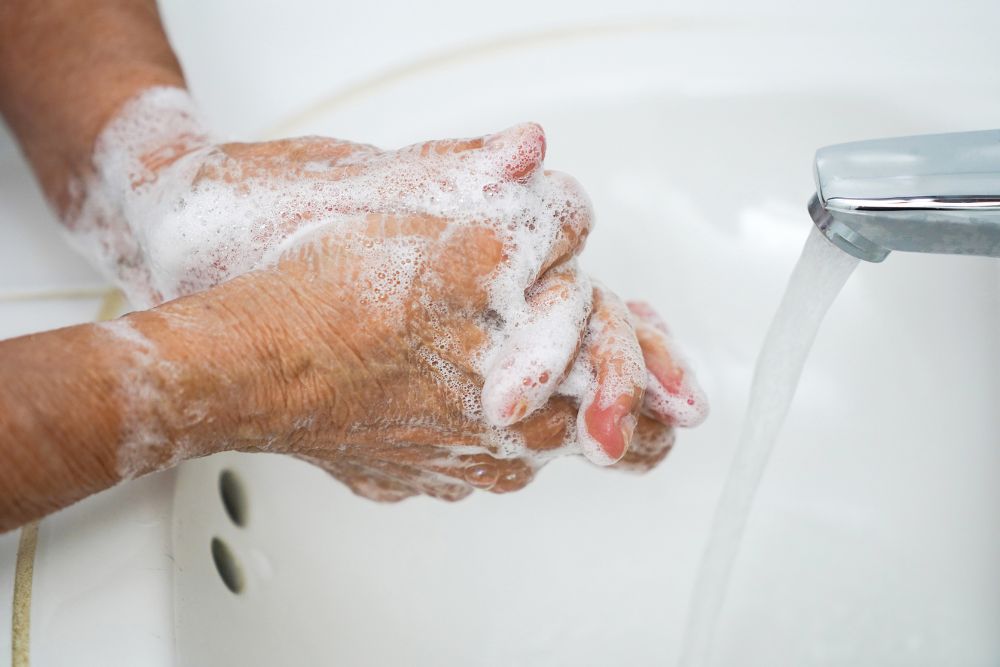World Hand Hygiene Day: How Handwashing Boosts Business Performance
As children, we are often reminded of the importance of washing our hands. But as we move through life, many of us don’t realize the impact that hand hygiene truly has. World Hand Hygiene Day, recognized annually on May 5, provides an opportunity to reflect on how hand hygiene plays a crucial role in our day-to-day lives.

While facilities are seeing higher expectations for both employee and guest experiences, leaders are challenged with achieving more with less. However, one standard remains persistent: cleanliness. And above all, there is one aspect where no one is willing to compromise—handwashing.
When we recognize World Hand Hygiene Day, we celebrate the importance of ensuring access to quality hand hygiene facilities, which are a critical component of overall business performance. In fact, one study found that 60% of people have a lesser opinion of businesses whose hand hygiene facilities are hard to use. Because of its substantial impact, it is critical for leaders to prioritize access to quality hand hygiene across their facilities.
In the spirit of World Hand Hygiene Day, keep reading for three ways leaders can optimize their facilities to promote good hand hygiene practices and bolster overall performance.
1. Assess Your Product Lineup to Ensure Offerings Are High Quality and Easy to Use
First, consider the hygiene products offered across the facility, such as hand soaps and sanitizers, cleaning materials, and product dispensers. Choosing durable, versatile products can cut down on refill time, minimize complaints, and increase satisfaction—all while ensuring the best hygiene for staff and guests.
Select soaps and sanitizers that are gentle on skin, which can improve the experience for many. Being intentional with soap and sanitizer offerings can further incentivize staff and guests to wash their hands without anxiety or discomfort, in addition to making all the difference for the over 31 million people in the United States who suffer from eczema.
Similarly, leaders can maximize hygiene by selecting smart dispensers that are high-capacity and easy to use for a range of mobility needs. Whether it’s guests looking to access the products they need or cleaning staff looking to seamlessly refill, efficient dispensers can help save time and effort. In turn, leaders can decrease negative reviews and complaints from staff and ultimately boost productivity and well-being.
2. Provide Regular Training and Approachable Instructions
Another way to maintain high performance is to actively encourage both staff and guests to adopt proper hand hygiene practices. While it is widely recognized that hand hygiene plays a vital role in mitigating the spread of illness and infection, it’s important to acknowledge that inconsistent training or information can lead to confusion among users.
To keep hand hygiene top of mind, post clear signage in common areas, such as entrances and exits, elevators, bathrooms, and breakrooms. Additionally, leaders should implement engaging, effective, and easy-to-follow hand hygiene training. Beyond providing clear instructions, trainings should be held regularly throughout the year—not just at employee onboarding.
Lastly, provide well-placed handwashing stations that encourage staff to prioritize their hygiene alongside their work. When employees have access to quality handwashing facilities, they feel empowered and protected, resulting in a heightened sense of safety among all. Further, they are more likely to be productive and feel satisfied.
3. Clean Restrooms Regularly, Thoroughly, and Smartly
A frequently cleaned restroom is essential, particularly for those who have a fear or phobia of bacteria and viruses. An unclean restroom can keep users away, which could have potentially significant impacts for your facility. Beyond improving satisfaction, committing to regular and thorough restroom cleaning promotes health and safety while lowering overall complaints.
Leaders can also harness the power of advanced, connected technology to implement a data-driven approach to hygiene, like optimizing the restroom cleaning routine by utilizing real-time data such as foot traffic and dispenser capacity. Equipped with these insights, cleaning staff can easily identify service needs and prioritize essential tasks, guaranteeing more hygienic restrooms and freeing up time for more strategic efforts.
Boosting Business Performance with Quality Hygiene Practices
Without access to high-quality handwashing throughout the facility, leaders and businesses can experience lower revenue, decreased satisfaction, and increased employee turnover. For example, research shows that 1 in 3 guests avoid purchasing food or beverages to limit restroom use in high-traffic venues. In office buildings, 45% of all complaints are related to the restroom, more than any other aspect of the workplace, and 1 in 6 people report having left a job because of a poor restroom. Because of its tangible impacts on operations, it is critical for leaders to consider how their hygiene offerings can hinder or boost their entire performance.
When everyone feels more comfortable in all areas of the facility, not only are they more satisfied, but they’re more willing to return, either as an employee or as a guest. Each year, World Hand Hygiene Day emphasizes the necessity of accessible and effective handwashing facilities. By embracing these strategies, leaders can significantly improve their facility’s reputation while ensuring a safe and enjoyable experience for everyone.
Katrin Ferge is a regional manager of the commercial segment at Tork, an Essity brand.
The post World Hand Hygiene Day: How Handwashing Boosts Business Performance appeared first on Facilities Management Advisor.

